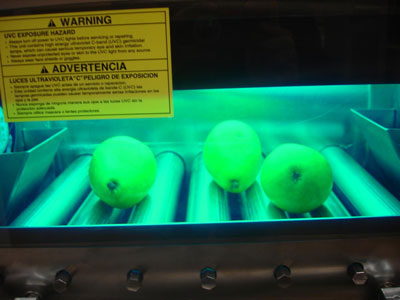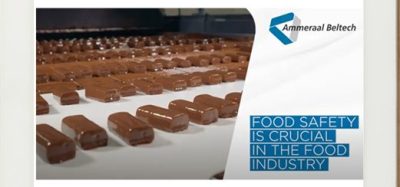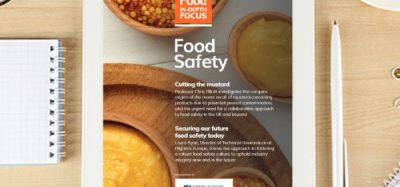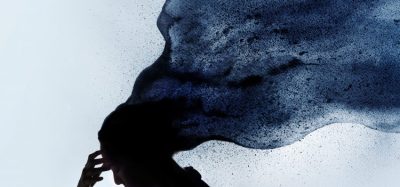UVC light can kill foodborne pathogens on fruits
- Like
- Digg
- Del
- Tumblr
- VKontakte
- Buffer
- Love This
- Odnoklassniki
- Meneame
- Blogger
- Amazon
- Yahoo Mail
- Gmail
- AOL
- Newsvine
- HackerNews
- Evernote
- MySpace
- Mail.ru
- Viadeo
- Line
- Comments
- Yummly
- SMS
- Viber
- Telegram
- Subscribe
- Skype
- Facebook Messenger
- Kakao
- LiveJournal
- Yammer
- Edgar
- Fintel
- Mix
- Instapaper
- Copy Link
Posted: 28 July 2015 | Victoria White | No comments yet
Scientists have shown that ultraviolet C (UVC) light is effective against foodborne pathogens on the surface of certain fruits…


The growing organic produce industry may soon have a new way to ensure the safety of fresh fruits.


Pathogens on the surface of organic pears were significantly reduced after exposure to UVC light. CREDIT: Roopesh Syamaladevi, WSU
Scientists at Washington State University have shown that ultraviolet C (UVC) light is effective against foodborne pathogens on the surface of certain fruits.
The findings are expected to be welcome news for organic fruit processors who seek alternatives to chemical sanitisers to help prevent food borne illnesses.
After learning from organic farmers and food processors about a lack of sanitising options, WSU food safety specialist Shyam Sablani and his colleagues looked into alternatives and decided to explore UVC light. It has a shorter wavelength than ultraviolet A or B light.
“UVC radiation is present in sunlight; however, it is completely absorbed by the ozone layer and Earth’s atmosphere” Sablani explained. “It has germicidal properties and can be effective against bacteria, mold and viruses.”
UVC light, which cannot penetrate opaque, solid objects, can be effective in sanitising surfaces. The technology, which has been around for several years, has been used to effectively sanitize food contact surfaces as well as drinking water and contaminated air.
UVC is more effective on smooth-surfaced fruits like apples and pears
It works on microorganisms by destroying nucleic acid and disrupting their DNA. But the light did not affect the chemical or physical quality of the fruit in the study.
Sablani and his colleagues exposed apples, pears, strawberries, raspberries and cantaloupe to different doses of UVC to determine how effective the pathogen-killing light was against a mix of strains of E. coli and listeria. They found that the light can inactivate up to 99.9%of pathogens on apples and pears. However, listeria was more UVC resistant than E. coli.
“If you have smoother skinned fruit, then this technology is really great,” Sablani said. “If the fruits are very rough and if the level of contamination is low, it also works quite well.”
The UVC light inactivated 90% of pathogens present on rough-surfaced fruit. Rough surfaces of strawberries, raspberries and cantaloupe offer places where pathogens can literally hide, reducing the effects of UVC light. If bacterial contamination levels are high, then UVC technology alone may not be sufficient to achieve the desired level of effectiveness.
Sablani said research is underway to increase the effectiveness of UVC light on fruits with rough surfaces.
Adding UVC lamps to a fruit packing line does not require major modification. UVC lamps enclosed behind protective barriers can be easily set up in a tunnel that exposes fruit to the light as it passes on a conveyor belt.
The study was published in the International Journal of Food Microbiology.








